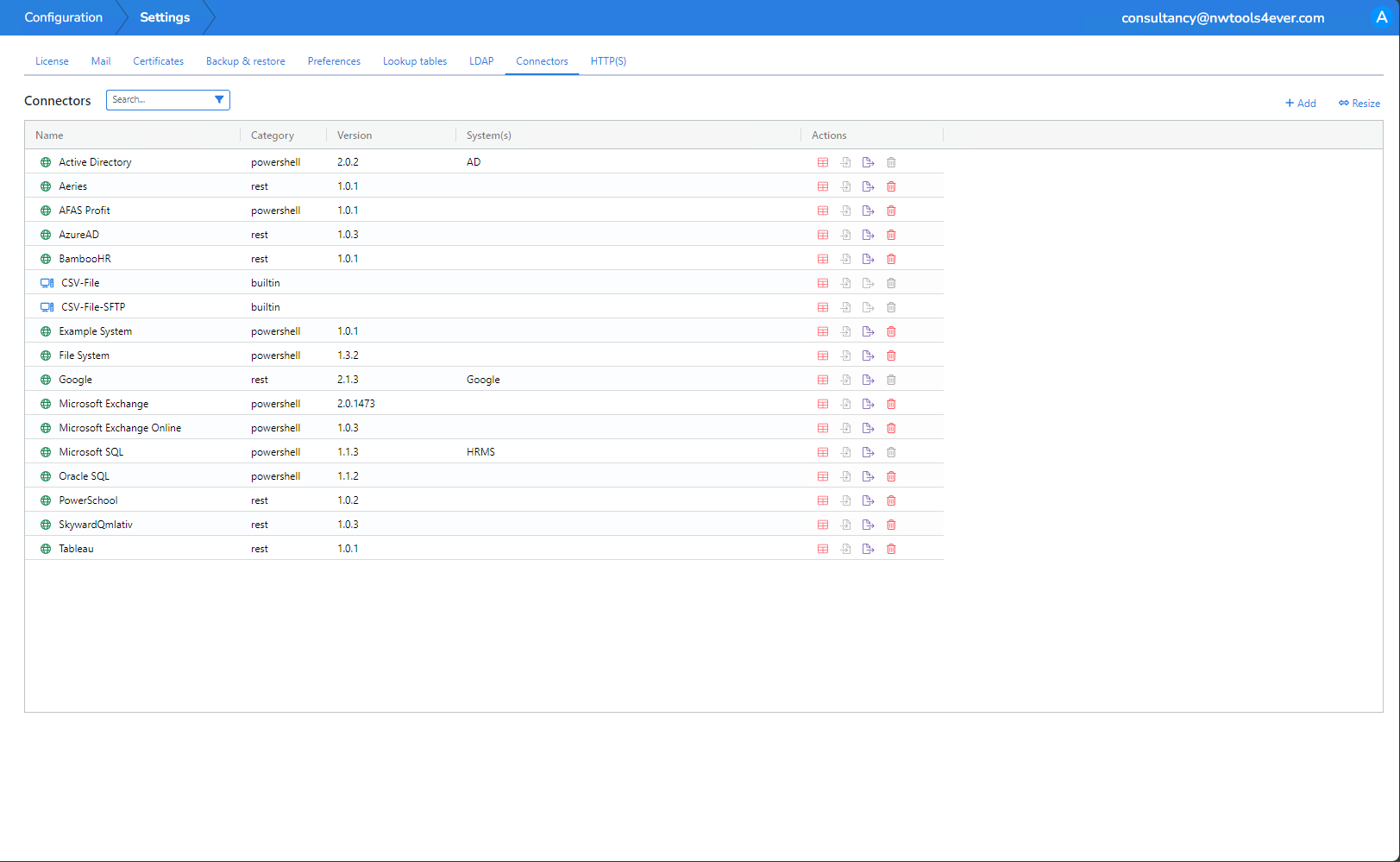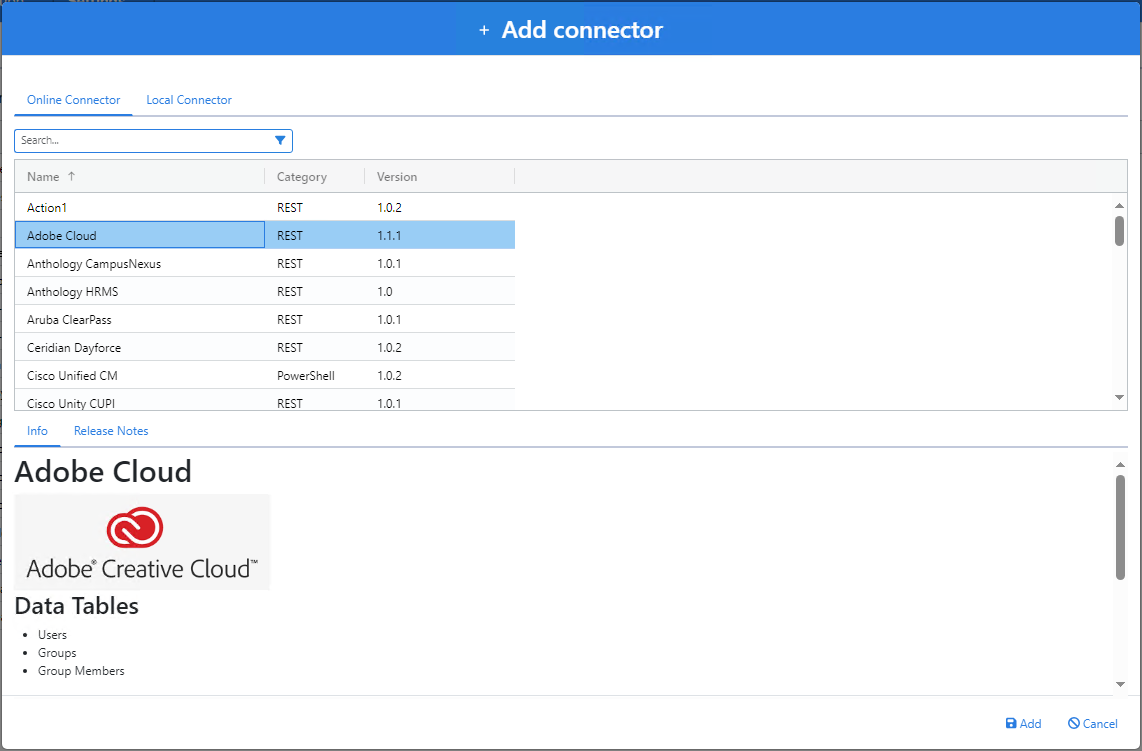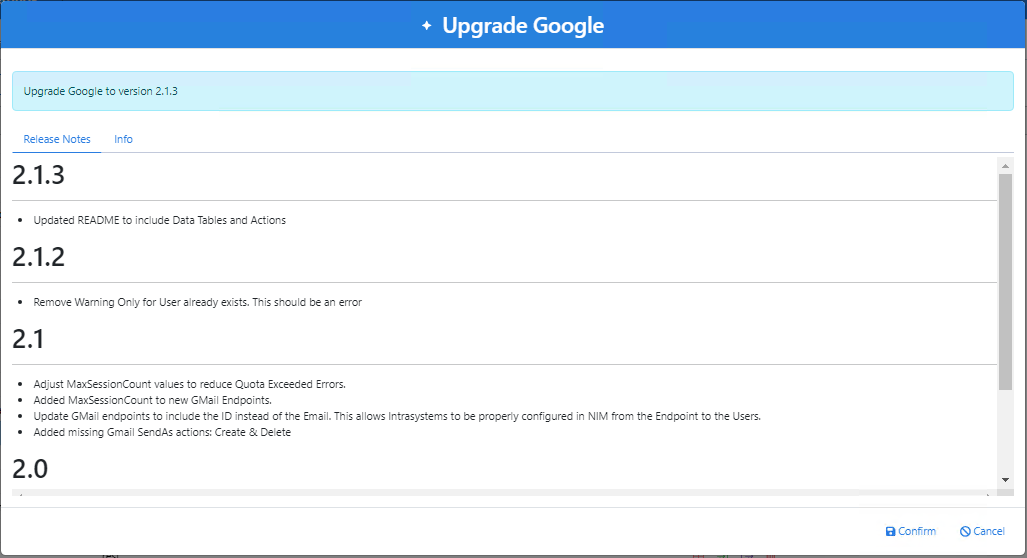Connectors
In the world of NIM, connectors are vital components that enable communication and data exchange between different systems and services. Keeping these connectors up-to-date and managing them effectively is crucial for maintaining system efficiency and integrity. Here's how you can add, update, or delete connectors within NIM.
To begin managing your connectors, go to the Settings in your NIM interface. Once there, click on the 'Connectors' tab. This section is dedicated to all operations related to connectors.

To add a new connector, click on the Add button within the Connectors tab. You'll be presented with a list of available connectors along with a summary of actions and detailed release notes. All this information is sourced directly from the NIM GitHub Organization repositories, ensuring you have the latest data at your fingertips.

NIM makes it easy to identify connectors that need updating. If a connector is out of date, the icon next to the connector's name will change color. This visual cue quickly draws your attention to connectors requiring your attention.

If you find an outdated connector, you can easily upgrade it by clicking the Upgrade button. Upon doing so, a confirmation screen will appear, displaying the release notes for the connector. These notes are crucial as they contain information about what's new, what's fixed, or any other changes. To proceed with the upgrade, simply click 'Confirm' after reviewing the notes.

Sometimes, you might need to remove a connector from your system. To delete a connector, look for the trash can icon next to the connector you wish to remove. Clicking this icon will initiate the deletion process. It's always good practice to ensure that the connector is no longer required by any of your systems or processes before removal to avoid any unintended disruptions.
Regularly Review Connectors: Regularly visit the connectors tab to stay informed about the status of your connectors. Staying proactive can help avoid issues related to outdated connectors.
Understand the Changes: Always read the release notes when adding or upgrading connectors. Understanding what changes occur with each update can help you anticipate and manage the impact on your systems.
Maintain Clean Architecture: Periodically review and remove any connectors that are no longer in use. Keeping your connector library clean and updated avoids clutter and potential conflicts.